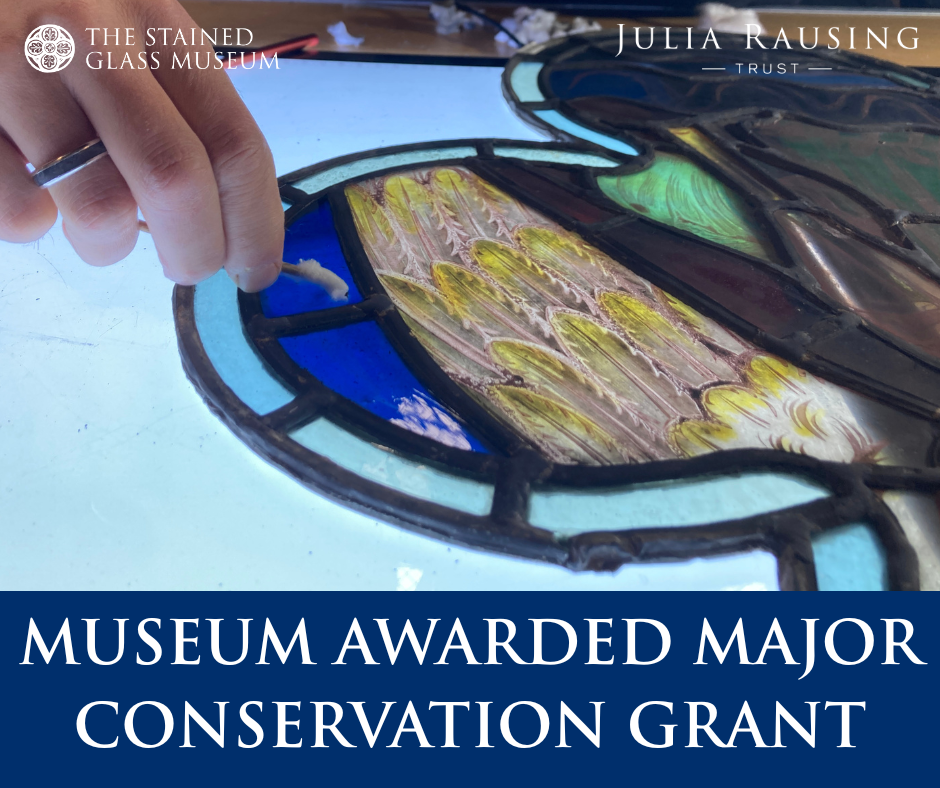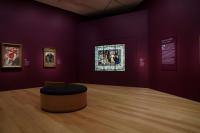STAINED GLASS - FAQ
History of Stained Glass
What are the earliest surviving stained glass windows, and where can they be found?
The earliest surviving stained glass windows thought to be in situ (in their original setting) are found in the nave clerestory of Augsburg Cathedral in Germany and date from c.1100. However, stained glass was certainly being made in Anglo-Saxon times. Some of the earliest surviving examples are in Ravenna, and thought to date from the 6th century.
In the UK, fragments of coloured window glass dating to the 7th century have been excavated at sites of monasteries in Monkwearmouth and Jarrow in Northumbria. A small stained glass panel in Dalbury, Derbyshire, thought to date to the early 12th century, may be the earliest stained glass window in the UK in situ (in its original setting). Panels of late 12th century stained glass also survive at Canterbury Cathedral and York Minster, but stained glass panels from this period in the UK are quite scarce. The earliest stained glass in the museum's collection dates to the early 13th Century.
How is glass coloured?
Glass is coloured by the addition of metallic oxides to the molten glass mix. For example, cobalt produces blue glass, gold produces a red-pink, and manganese a purple colour.
Is it true that glass is a liquid and stained glass windows sag over time?
No! This is a common myth. Our friends at the Corning Museum of Glass have produced a helpful explanation why: Does glass flow?
Where can I learn how to make stained glass windows?
We have an excellent programme of creative glass workshops where you can learn traditional skills of glass painting, and leading and glazing, or experiment with copper foiling, and glass fusing techniques.
About the museum's collection
Where did the stained glass windows in the museum's collection come from?
The stained glass windows in the museum's collection come from from a variety of buildings including churches and cathedrals, private homes, hospitals and studios. The majority of windows are from the United Kingdom, with a small collection from Europe, and a handful of pieces from the USA.
Why were these windows removed from the buildings they were made for?
Each window has its own story of how it came to be in the museum. Sometimes stained glass windows were removed from the buildings they were originally located in because the building was closed or demolished, or because reordering or rebuilding necessitated their removal. Some of the windows in our collection were sadly the victims of changing tastes, and were removed to be replaced with more modern windows. The museum played a very important role in rescuing stained glass from redundant and closing churches in the 1970s and 1980s. Where possible, we still play a part in providing a home to displaced windows today, working closely with the Stained Glass Repository.
Are the windows original?
Yes! All of the stained glass panels in the Museum are original artworks. Many have been removed from the buildings they were located in, either because they were replaced or the building was demolished.
Does the museum still rescue stained glass?
The museum still actively collects stained glass, however we cannot accept all pieces that are offered to us. Careful consideration is given to criteria as identified in our Collections Development Policy.
Is the museum still collecting?
Yes the museum is still actively collecting and developing its collection. Most new acquisitions we receive are donations. We also occasionally receive pieces on temporary loan. It is very rare that the museum makes new acquisitions by purchase, often with the help of fundraising campaigns.
Can I donate my piece of stained glass to the museum?
The Stained Glass Museum is grateful to those who wish to make a donation to the museum, and all offers are carefully considered. However, with limited space and resources, we cannot accept every piece that is offered to us. The museum is currently only collecting pieces which fall under our Collections Development Policy. As a small independent museum, we do not have the resources to purchase panels offered to the museum.
In the first instance, please email info@stainedglassmuseum.com with information about your proposed donation including any pictures and known information about the panel, the artist and its original location. Offers are then considered by the Curator and Acquisitions & Disposals Committee before Trustees make a decision.
Conservation and Restoration
Where can I find advice on repairing stained glass?
We would always recommend seeking the advice of a professional stained glass conservator for the repair of all historic glass. We advise consulting with an ICON accredited stained glass studio for all conservation work. Find out more about stained glass conservation
Does the museum have a conservation studio for restoration and repairs?
Unfortunately we don't have a conservation studio.
Where can I find advice about caring for our stained glass?
The Council for the Care of Churches has some useful guidance on looking after stained glass in church buildings. Stained glass and leaded windows in churches do not normally require regular cleaning, but if you are concerned always seek the advice of a professional. cleaning stained glass windows
Commissioning Stained Glass
I would like to commission a new stained glass window. Where can I find a suitable artist?
There are a number of practising stained glass artists in the UK who undertake commissions. It is important to find an artist whose work you like and who has the skills and experience to design and/or make your window. If you are commissioning a new stained glass window for a church, you will likely need statutory permission. Find our more about commissioning stained glass
Finding out more about your windows
I have a piece of stained glass, and I would like to know more about it. Can the museum date it, tell me about the artist and its history?
We try to answer enquiries from individuals and organisations. However, as an accredited museum and registered charity, we do not provide valuations.
There’s a window in my local church and we would like to know who made it – how can I find out more?
If you are trying to identify the designer or maker of a stained glass windows in your church, we have a short guide to researching stained glass which may help you find out.
I have a piece of stained glass in my local church/home but all records of it are lost – how can I find out more?
You may find our short guide to researching stained glass helpful, or see our external resources page for information about archives.
Did artists sign their windows?
Some artists sign their windows, but others do not. Some sign their full names, others use monograms or small symbols to sign their work. For more information see our short guide to researching stained glass
Windows can be designed and made entirely by one person, others may be designed by one person and made by another. Many artists also employed assistants to help them in their work who also painted and leaded pieces for the final design. Some artists employed and worked alongside several assistants at the same time.
Can the museum value my panel of stained glass ?
As an Accredited museum The Stained Glass Museum abides by the Museums Association Code of Ethics, we are therefore unable to give valuations. We also do not provide opinions in order to assist in obtaining valuations, give opinions in support of valuations, assist in the disposal of private property or express opinions regarding the merits of commercial organisations. If you are looking for a valuation we recommend contacting an auction house or antique dealer.
OPENING HOURS
Summer (1 April – 31 October)
Monday -Saturday 10:00am – 5:00pm (last admission 4:30pm)
Winter (2 November – 31 March)
Monday -Saturday 10:00am – 4:00pm (last admission 3:30pm)
Monday -Saturday 10:00am – 5:00pm (last admission 4:30pm)
Winter (2 November – 31 March)
Monday -Saturday 10:00am – 4:00pm (last admission 3:30pm)
NEWS
WHAT'S ON
MAILING LIST
Become a Friend
DONATE
The Stained Glass Museum is an independent accredited museum and registered charity no. 1169842.
Donate
Donate



